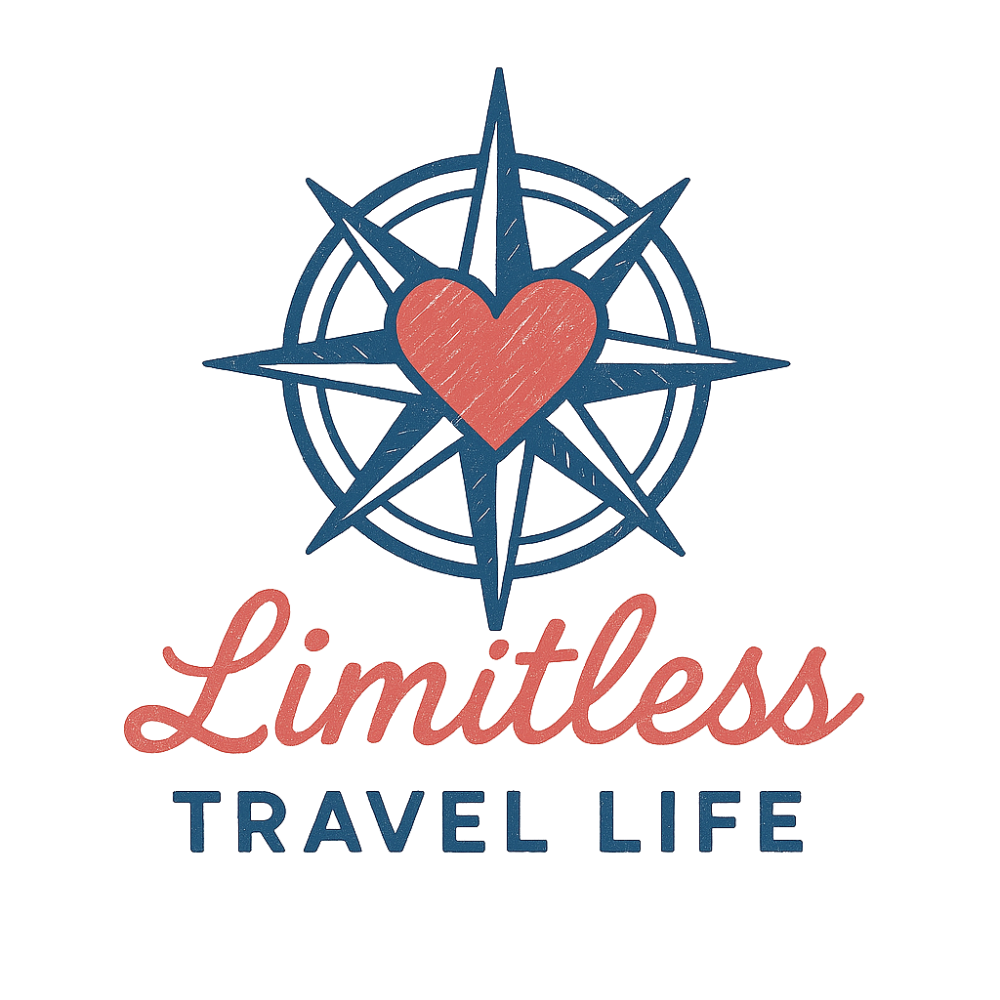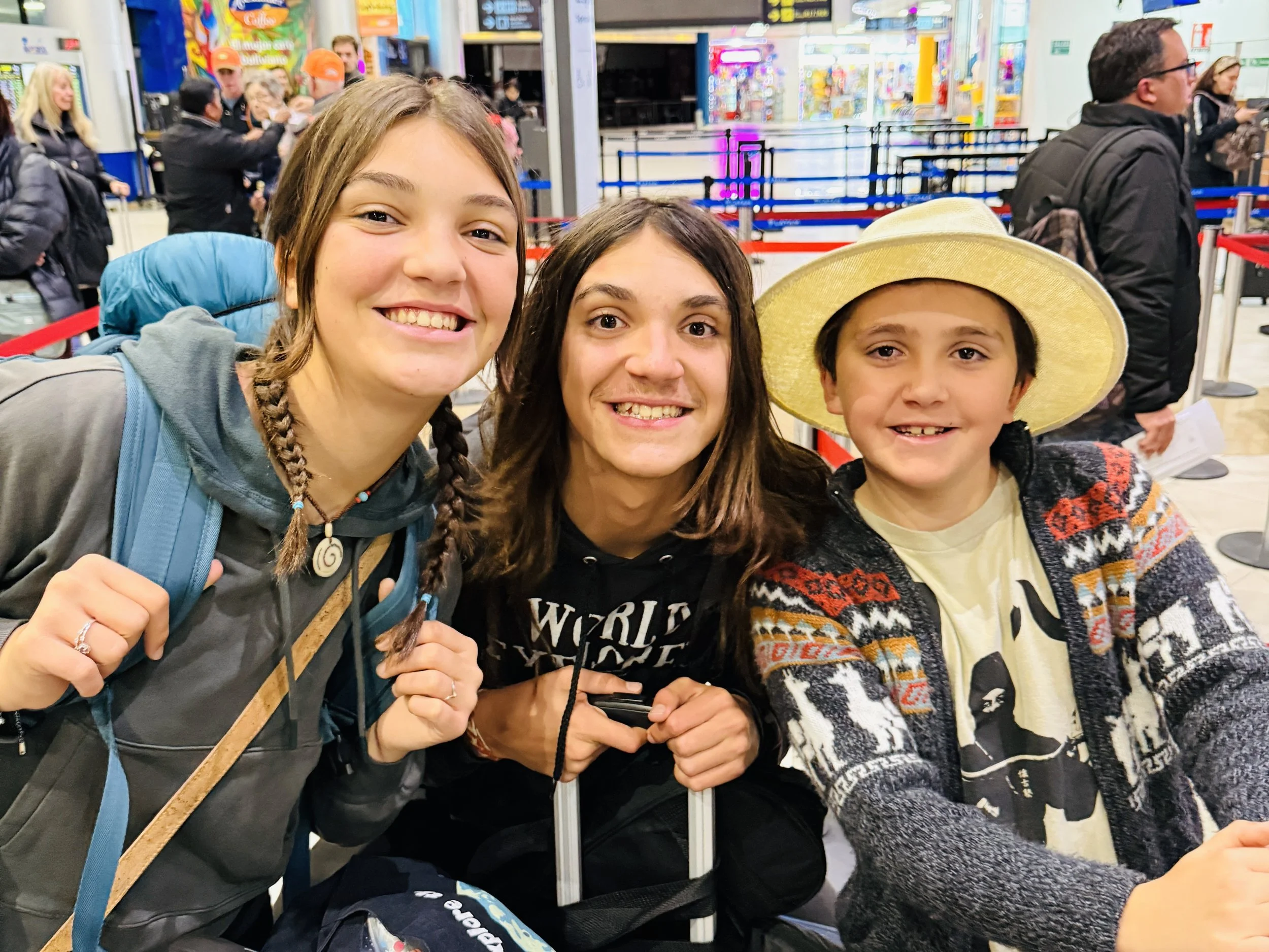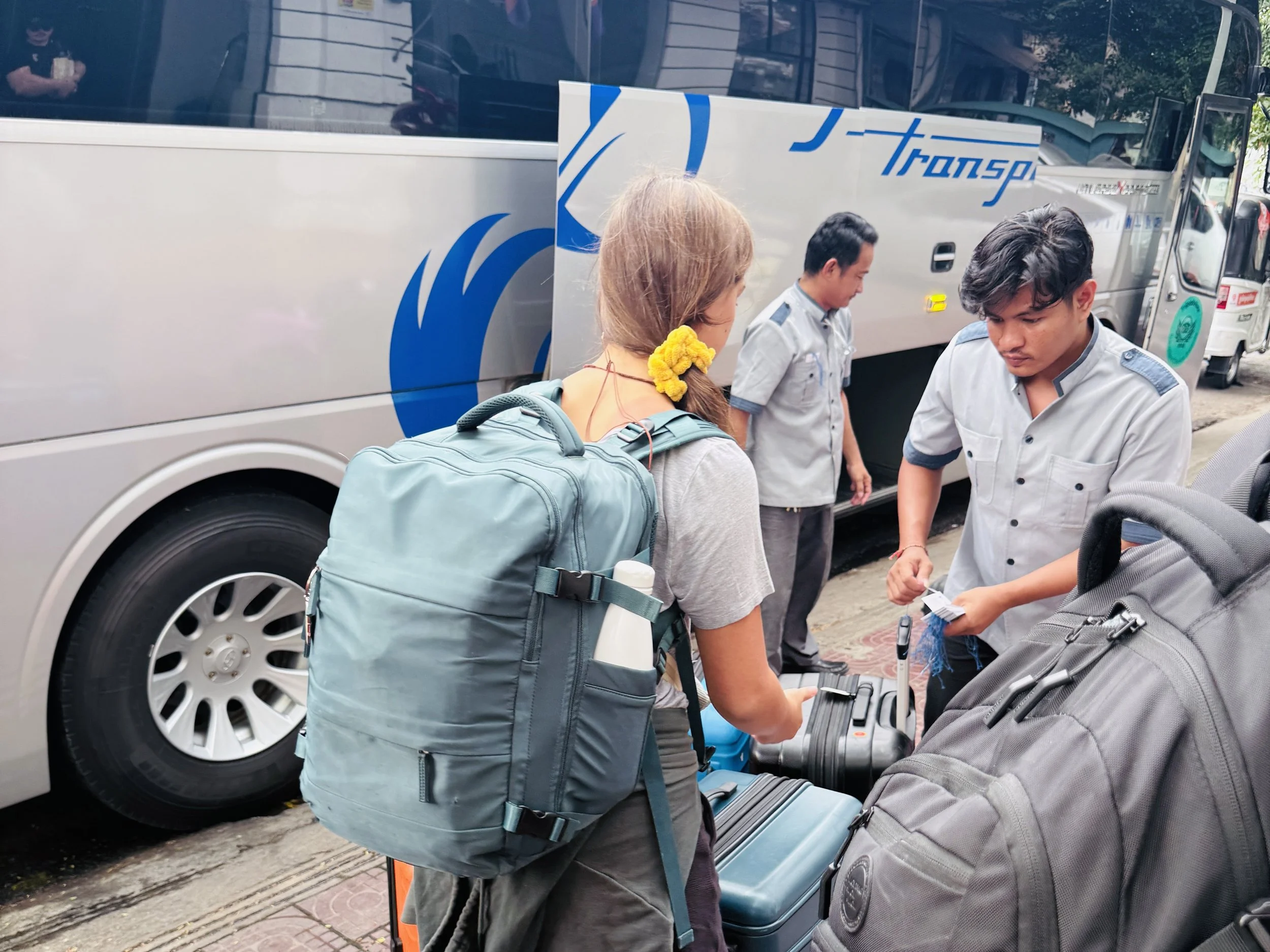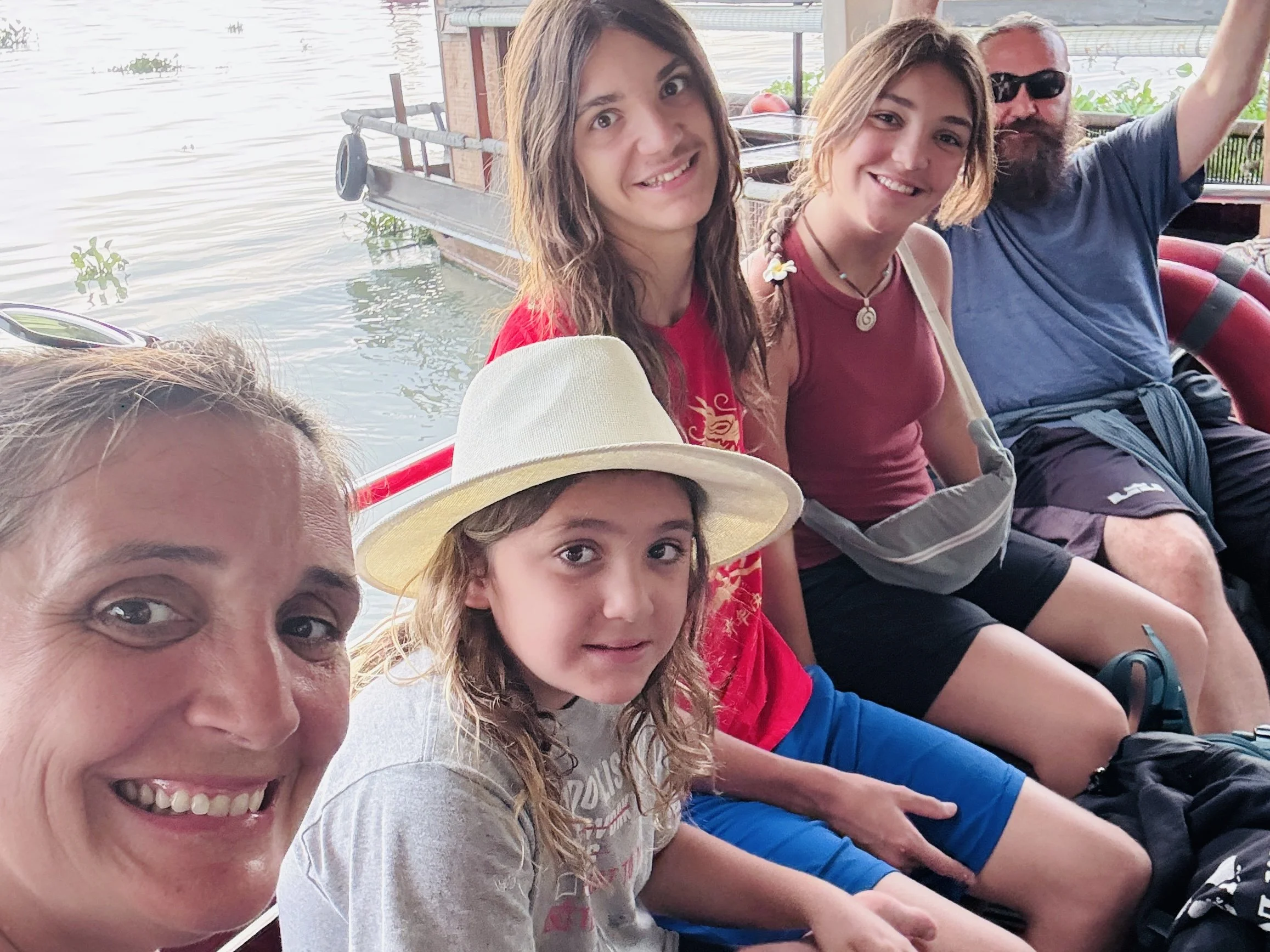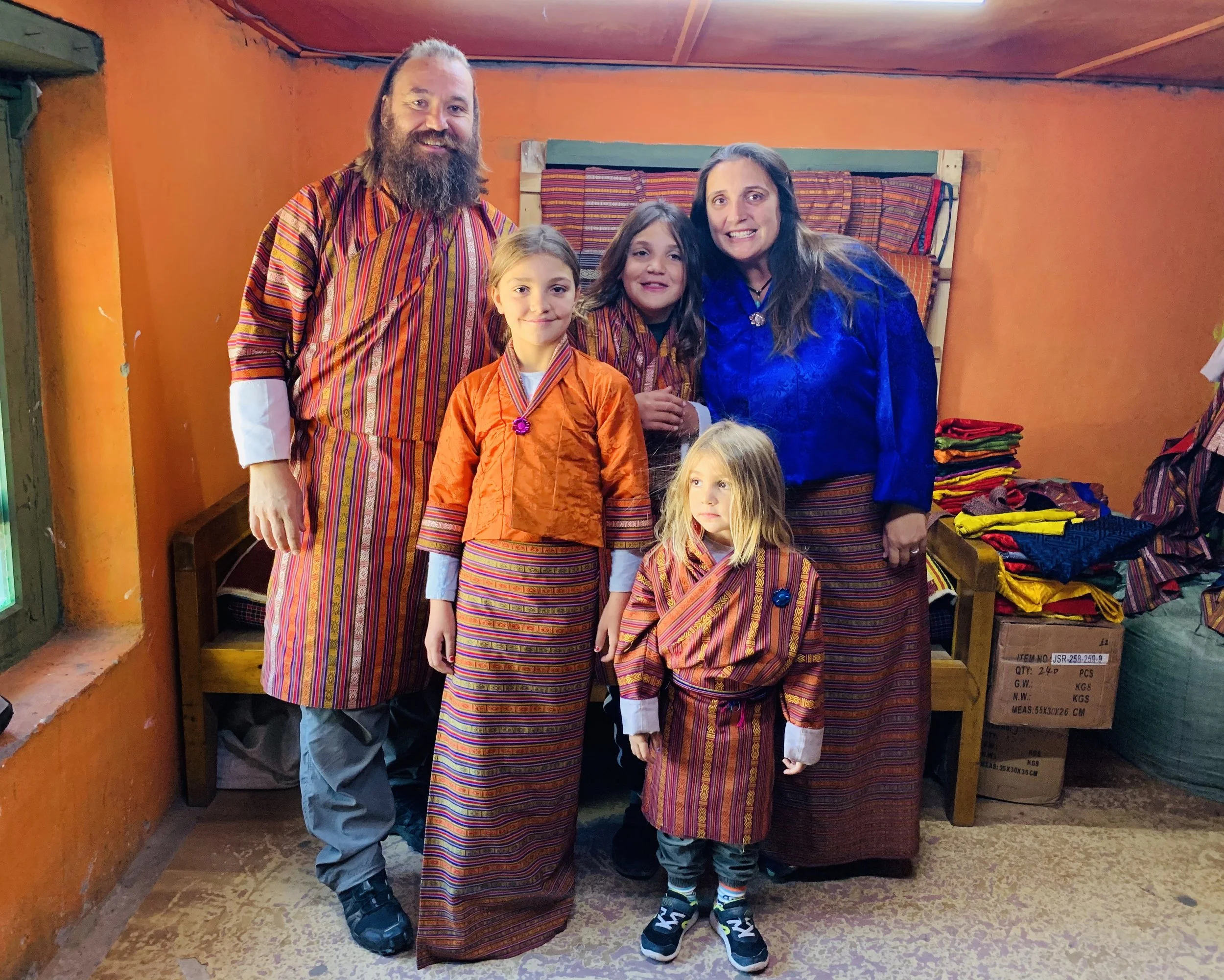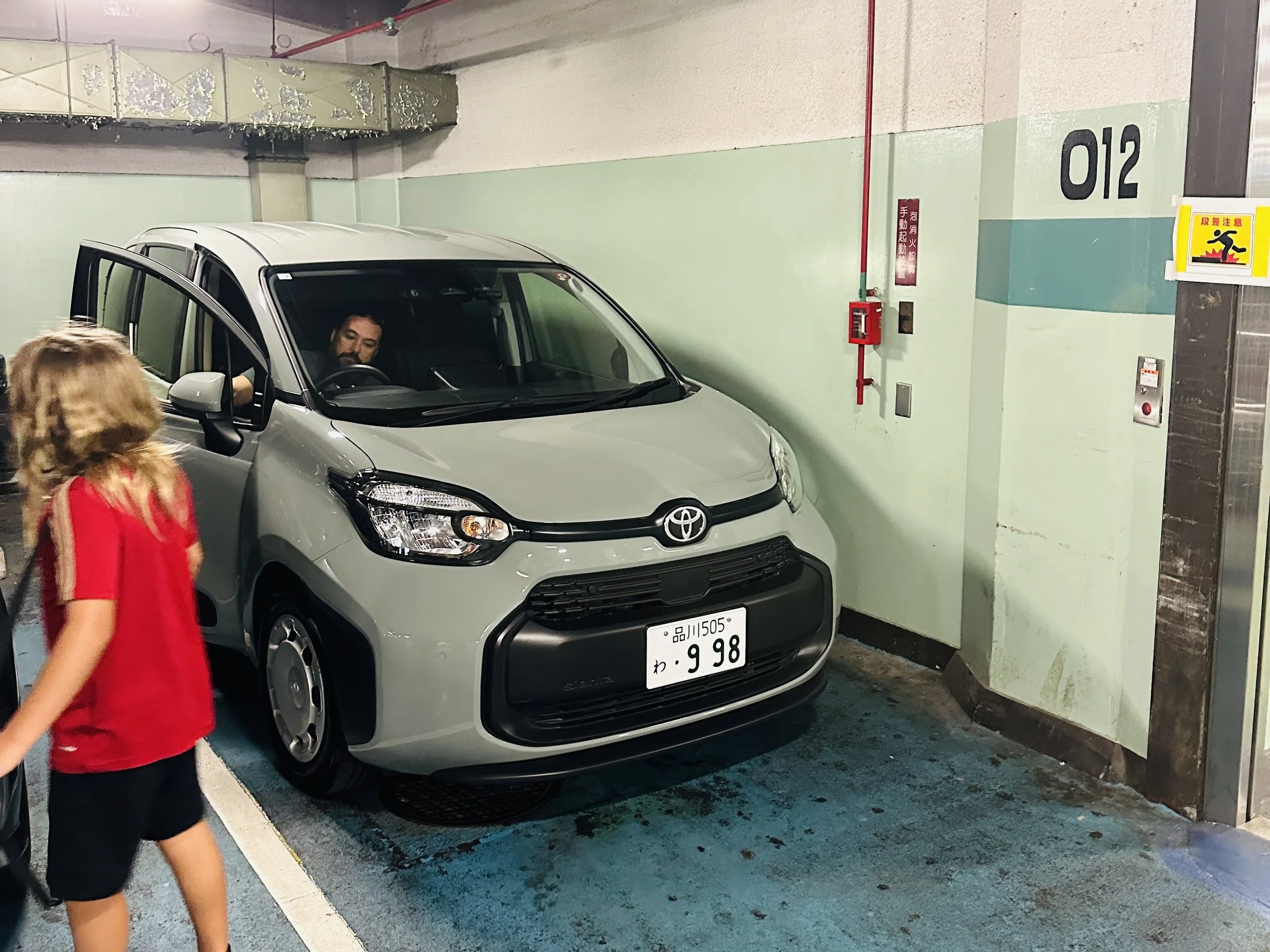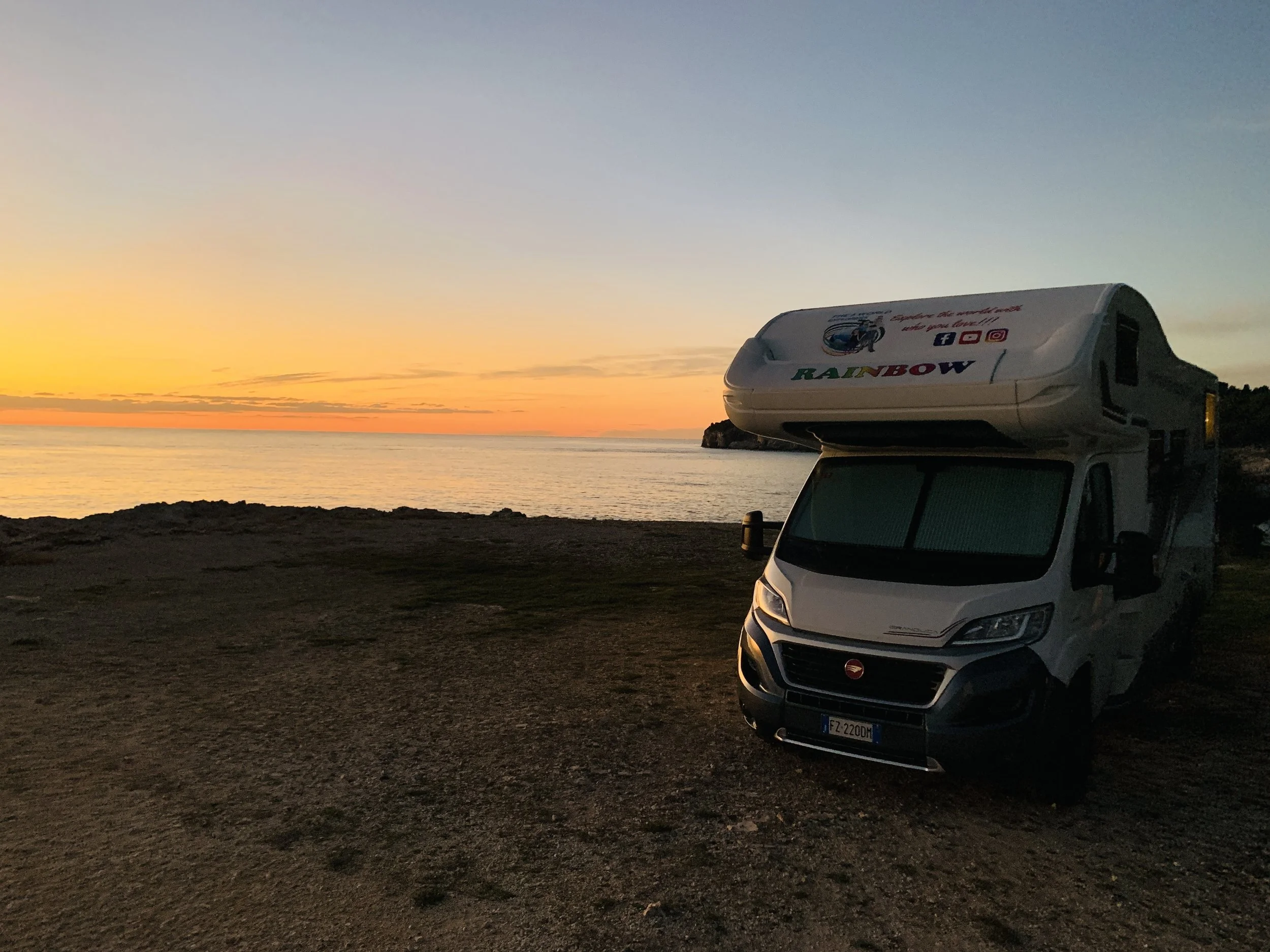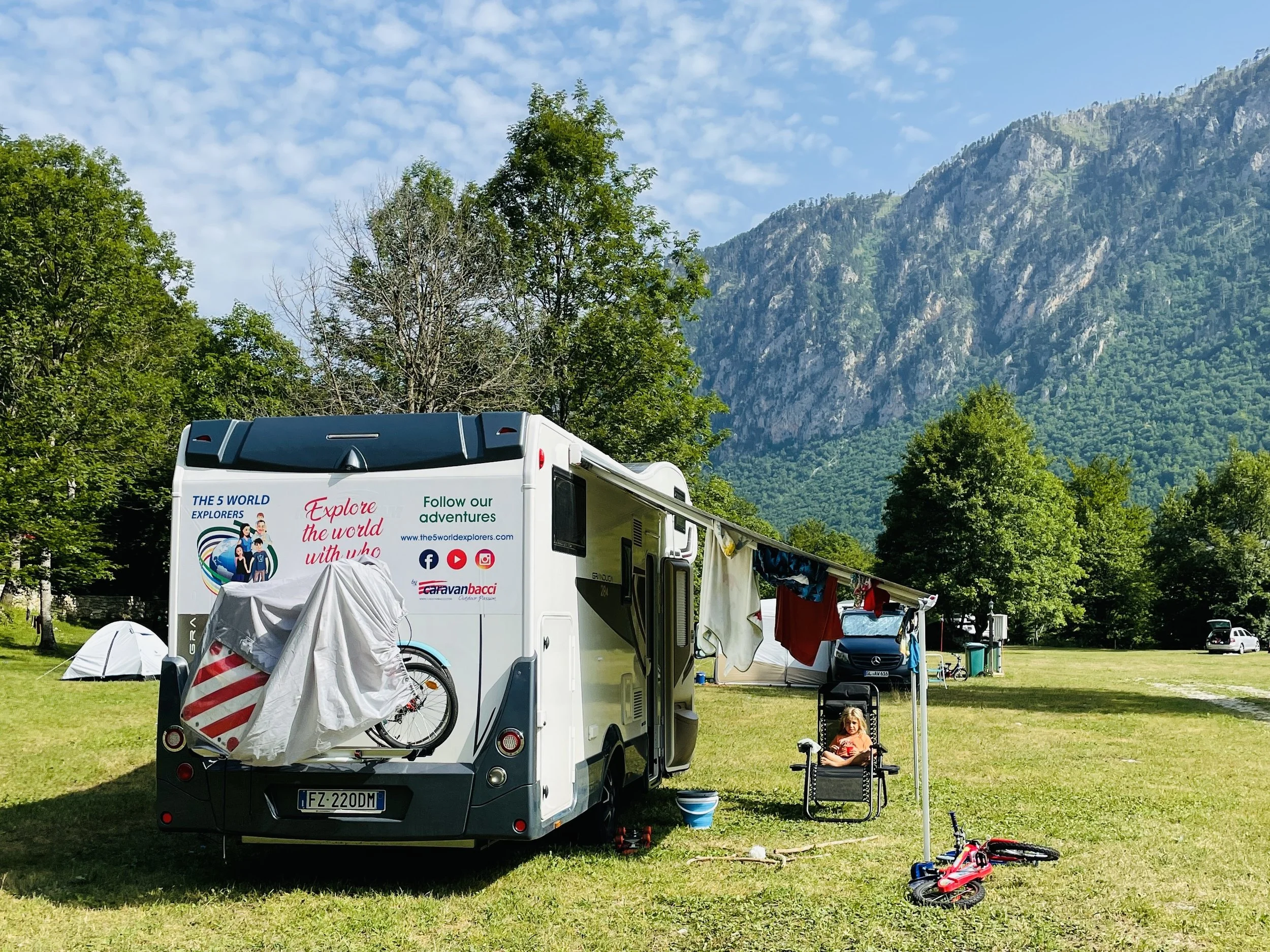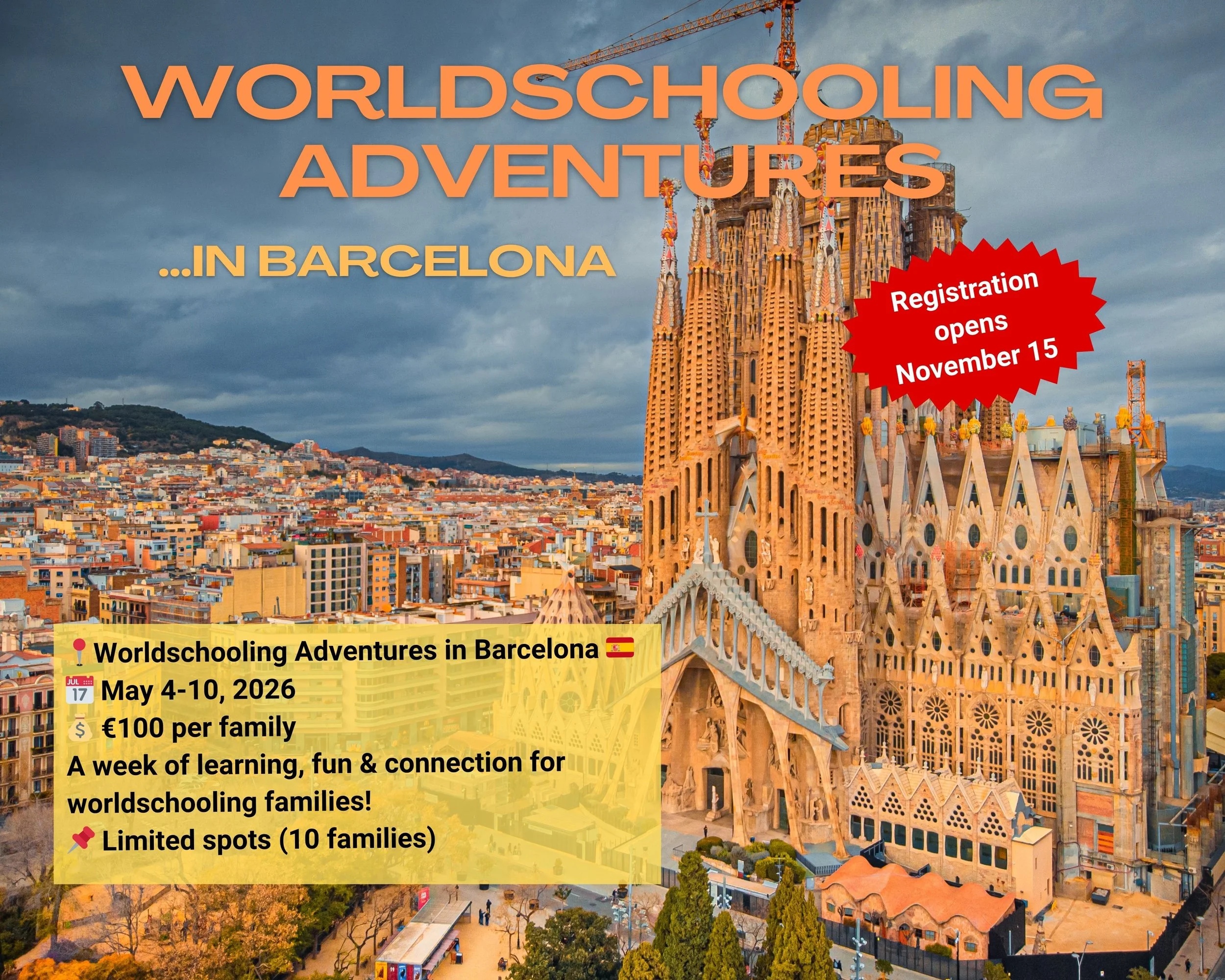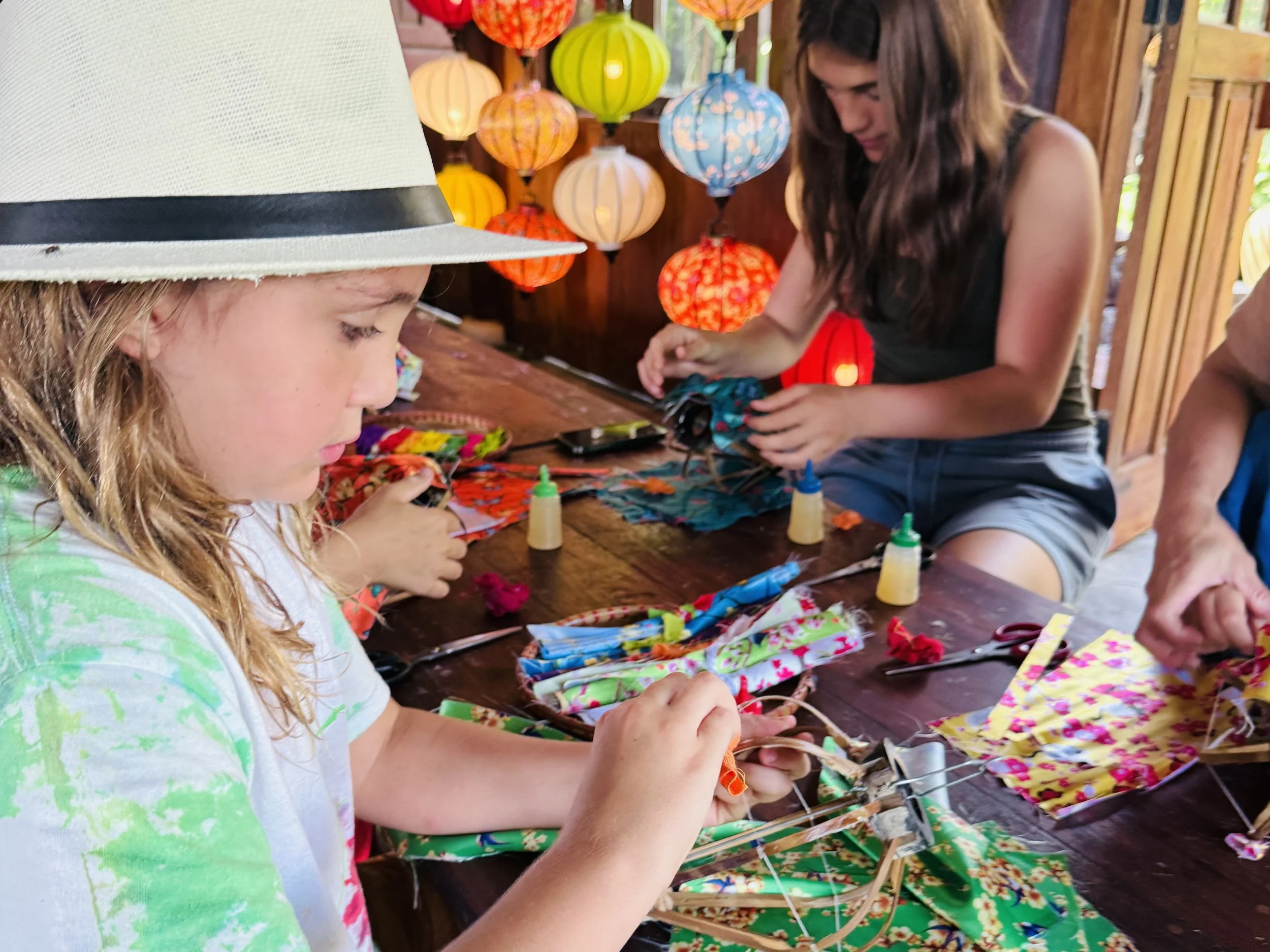Different Ways to Travel as a Family: How to Choose What Fits Your Journey
There’s no single right way to travel as a family. Over the years, we’ve explored the world through slow travel, road trips, public transport, tours, and everything in between. In this post, we break down the different travel styles families can choose from — and how to find the one that fits your journey.
Traveling as a family is one of the most transformative gifts we can give our kids and ourselves. But here’s something we’ve realized after more than seven years of traveling full-time:
There is no single “right” way to travel.
And honestly? That’s the beauty of it.
Throughout our journey, our travel style has evolved over and over again. Some seasons of life pushed us toward slow travel, while others were made for road trips, fast-paced adventures, or joining organized groups. Sometimes we wanted routine and stability. Other times, we craved movement, spontaneity, and a bit of chaos (in the best way).
The truth is…
👉 Families travel differently.
👉 Families change over time.
👉 And your ideal travel style may shift from trip to trip, and that’s perfectly okay.
In this blog post, we’re sharing a complete, honest overview of the different ways families can travel, what each one offers, what to expect, and how to choose (or combine!) the styles that fit your family best.
We’re not here to convince you that one way is “better.” We’re here to open the door to possibilities so you can travel with more confidence, ease, and joy, whether you’re planning one trip a year or building a lifestyle around exploration.
Let’s dive in. 🌏💛
1. Slow Travel
Stay longer. Settle in. Let life unfold.
Slow travel has become the backbone of our family’s full-time journey. To us, it means staying in one place long enough to understand its rhythm, not just its landmarks.
For our family, slow travel looks like:
Renting a small house or apartment for a few weeks or more.
Finding a favorite café.
Getting to know the local fruit seller.
Joining weekly classes or workshops.
Cooking meals at home.
Letting the kids create their own routines.
Slow travel works beautifully if you:
✔️ Work remotely
✔️ Worldschool or homeschool
✔️ Get overwhelmed by fast-paced itineraries
✔️ Want depth over quantity
What we love about slow travel:
Kids feel grounded and settled.
We make real connections with locals.
We spend less by avoiding constant transportation.
We learn more naturally through everyday experiences.
The downside?
You may see fewer places, but the places you do see become part of your story.
We value these seasons of slow travel because they give us the rare chance to simply be. They also balance out the periods when we need to move quickly due to short visas, logistics, or costs. When we slow down, we truly enjoy living like locals.
Often, we arrive with big plans because “we have the time”… and then we end up doing very little, simply because we’re content just being there.
And that’s the magic of slow travel: life doesn’t rush past you.
It unfolds gently, one meaningful moment at a time.
During our time in Hoi An, Vietnam, for example, we had a long list of things we wanted to see. And while we eventually did some of them, most of our days were spent biking everywhere, visiting the market to buy fresh vegetables from our favorite lady, and watching the sunset from our kitchen while preparing home-cooked meals. Those simple moments became our favorite memories of the entire stay.
2. Fast Travel / Multi-Stop Trips
The classic “vacation” travel style has its own magic.
Fast travel means visiting multiple destinations within a short period of time. Think:
10 days in Italy, exploring four cities.
2 weeks in Southeast Asia, hopping between countries.
A one-month whirlwind around Europe.
Families love this style because it packs a lot of variety into a short window, perfect for bucket-list trips or limited time off work.
We’ve done fast travel many times, especially in places where everything feels new and exciting (Japan, Morocco, India, Australia).
Why fast travel works:
✔️ You maximize experiences
✔️ You see a lot in a short time
✔️ It’s thrilling, stimulating, and full of energy
Challenges to expect:
Kids get tired more quickly.
Constant packing and unpacking can be draining.
Everyone needs downtime afterward.
We do a fair amount of fast traveling ourselves. Most recently, during our trip to Bolivia, we spent three intense days exploring the Salar de Uyuni, also known as the Salt Flats. We took an overnight bus from La Paz, arrived in Uyuni eight hours later, jumped straight into our private tour, and spent three unforgettable days visiting some of the most surreal landscapes we’ve ever seen.
It was exhausting and breathtaking all at once, absolutely worth it. But we also planned slow days before and after that side trip to balance out the intensity.
Our advice?
Build in a rest day every 3–4 days where you do nothing:
No tours, no rushing, no sightseeing. Just be.
It makes the entire trip smoother, happier, and far more enjoyable for everyone.
3. Public Transportation Adventures
Buses, trains, ferries, and the stories that come with them.
Public transportation is one of our favorite ways to immerse ourselves in local life. It’s affordable, eye-opening, and often surprisingly fun, especially with kids.
We’ve taken:
Night trains across Asia
Long-distance buses in Peru and Turkey
Tuk-tuks in Thailand and Vietnam
Ferries in Greece
Motorcycle taxis in the Philippines (yes, with all five of us!)
Why families love this style:
✔️ It’s budget-friendly
✔️ Kids find it adventurous
✔️ It’s fantastic for learning geography and culture
✔️ You’re surrounded by real, everyday life
But of course, there are limitations:
Unpredictable schedules
Long travel times
Difficult with lots of luggage
Less flexibility
We use public transportation most when we're:
Exploring cities
Traveling through countries with strong bus or train systems
Trying to keep our trip more eco-friendly
Lately, we’ve really enjoyed crossing borders over land rather than flying. For example, when we traveled from Vietnam to Cambodia, we took a ferry that stopped at the border, handled all the visa procedures for us, and then continued to Phnom Penh. From there, we rode tuk-tuks around the city and later took a public bus to Siem Reap.
We absolutely loved traveling this way; it was inexpensive, adventurous, and allowed us to interact with locals much more naturally. It also supports local businesses and gives you a deeper, more authentic glimpse into the true rhythm of daily life.
Public transportation may not be the most convenient option, but the memories, stories, and human connections it creates make it one of the most enriching ways to travel.
4. Guided Tours & Day Trips
Perfect when you want to learn, not plan.
There are destinations where guided tours truly enhance the experience. Think of…
Complex historical sites
Nature reserves
Cultural workshops
Regions where logistics are complicated
Countries where safety or language is a factor
We’ve joined tours in Bhutan, Bolivia, Mongolia, Tanzania, and India, and each one has taught us something we would never have discovered on our own.
What we look for in a good tour:
✔️ Small group or private options
✔️ Kid-friendly pacing
✔️ Guides who are passionate storytellers
✔️ Hands-on, immersive elements
When done well, tours bring depth, insight, and ease to your travels, especially when your brain needs a break from planning every detail yourself.
Over the years, we’ve taken many tours during our full-time travels. Some have been group tours, but for the most part, we prefer private ones, as we’re a family of five, which makes logistics much smoother.
In some destinations, tours are not just helpful, they’re required.
For example, you cannot visit Bhutan without being on an organized tour.
In other places, such as India, tours simplify life tremendously and help you gain a deeper understanding of the culture. In countries like Tanzania, joining a guided safari allows you to experience wildlife safely while learning from experienced experts.
For shorter, one-day tours, we may choose a group option if it’s more cost-effective for our family. One of our go-to companies to search for day tours is Viator loads of options at different prices. But for longer experiences, private tours tend to work best for us.
What we love most is how much insight a knowledgeable local guide can provide. A single conversation can open your eyes to traditions, history, and everyday life in ways you might never uncover on your own.
Sometimes, a tour isn’t just about seeing a place, it’s about truly understanding it.
🚗 5. Road Trips & Renting a Car
Freedom. Flexibility. Space to breathe.
With three kids, road trips quickly became one of our favorite ways to explore. Having our own car gives us a kind of freedom that’s hard to match. It allows us to:
Stop whenever we want.
Visit hidden spots.
Carry snacks, backpacks, jackets, and camera gear with ease
Take spontaneous detours.
Adapt to the kids’ energy levels.
Enjoy the journey as much as the destination
Some of our most memorable road trips have been in:
Iceland
The U.S.
Italy
Tunisia
Morocco
Australia
… and many more.
Road-tripping gives families space to breathe, literally and figuratively.
Since we often rent cars, we’ve tried many platforms over the years. We now use Discover Cars because it consistently makes the process easier. We like it because it:
Compares many rental companies at once.
Let’s us filter by family size (a must for a family of five!).
Offers traveler-friendly pickup options.
Shows transparent pricing and insurance terms.
Works in almost every country we visit.
We tend to rent a car when:
A destination is more spread out
Public transportation is limited
We want maximum flexibility
We’re exploring nature or smaller cities.
Including a car in your travel plans doesn’t mean you have to drive everywhere; it simply opens the door to more spontaneous, meaningful moments along the way.
In our 7+ years of full-time travel, we’ve rented cars countless times and have loved the independence they give us. It also helps us understand a country in a completely different way. For example, after driving in Japan, we realized it might be our favorite country to drive in. The highways are spotless, safe, and well-organized, and the rest stops are next-level (imagine ramen, not fast food!).
In other places, driving was more of an adventure. In Morocco, we once got pulled over for going just 3 km over the speed limit, but after a small “tip,” we were on our way again. Moments like that taught us a great deal about the local culture, rules, and humor.
Above all, the independence of having your own car is incredible. And in many countries, especially for a family of five, renting a car is not only more convenient, it’s often more economical than taking trains, buses, and additional transportation.
Road trips aren’t just about getting from point A to point B.
They’re about everything that happens along the way.
🚐 6. RV & Campervan Travel
Your home… on wheels.
For many families, traveling in a campervan or RV is the ultimate dream, and we completely understand why.
We’ve done campervan trips in New Zealand, Australia, and Ireland, and absolutely fell in love with the lifestyle. We loved the freedom, the flexibility, the ability to sleep in nature, and the sheer simplicity of unpacking only once and taking your whole “home” with you.
Why families love campervan travel:
Kids can nap, snack, and relax freely
You control the pace of your journey
You always have your own bathroom and kitchen
It feels adventurous, cozy, and so different from everyday life
Challenges to keep in mind:
Long driving days
Fuel costs
Finding campsites
Tight sleeping spaces
Not ideal in extreme heat or cold
But for families who love nature, independence, and the feeling of waking up somewhere completely new, it’s truly magical.
We loved it so much that during the COVID-19 pandemic, we finally bought our own campervan and traveled through some incredible parts of Europe. Having our house on wheels always with us felt comforting and freeing at the same time. And the places we got to sleep, on top of mountains, beside quiet lakes, in the middle of forests, were experiences we could never have had otherwise.
It’s a beautiful adventure to experience with kids, challenges, and all.
🌍 7. Organized Group Travel (Pop-Ups, Retreats, Learning Trips)
Community + structure = a beautiful combo.
In recent years, more families are joining:
Worldschooling pop-ups
Family retreats
Group travel itineraries
Learning experiences abroad
And it’s easy to see why. Community is powerful. Kids make friends within minutes. Parents find support, connection, and understanding. And best of all, you don’t have to plan every little detail yourself.
We know this firsthand. Over the years, we’ve hosted several family pop-ups around the world, including a beautiful one last year in our hometown of Florence, Italy. Our next one will be in Barcelona in May 2026, if you want to register click here. These gatherings always create something special: community, learning, and friendships that last far beyond the week together.
We spent our days exploring, learning, and enjoying shared experiences with friends we already knew, and many new ones. There is something magical about watching families grow closer, kids learn together, and adults find their own tribe along the way.
This style of travel is especially wonderful for:
Families new to international travel
Families craving community on the road
Solo parents traveling with kids
Anyone wanting deeper learning through curated activities
The only downside?
A little less flexibility, since you follow a group schedule. But the shared experience, the connection, the friendships, the sense of belonging, make it more than worth it.
Our next Worldschooling Adventures in Barcelona in May 2026 click on the link https://www.the5worldexplorers.com/shop/worldschooling-popup/
🎒 8. Backpacking / Minimalist Travel
Light, simple, spontaneous.
Backpacking with kids may sound intimidating, but it can actually be one of the most liberating ways to travel as a family.
When we travel lightly, we:
Move more freely
Spend less
Focus on experiences rather than things
Stay present
Bond through shared challenges and discoveries
This style works wonderfully in places like:
Asia
The Americas
Europe
And here’s the truth: you don’t need to be a 20-year-old backpacker to embrace minimalist travel.
We’ve never been traditional backpackers, not because we had anything against it, but simply because we started traveling with suitcases and never fully shifted. But we do love the moments when we stay somewhere longer and take short side trips with nothing but our backpacks. It feels freeing, simple, and refreshing.
Minimalist travel is far more accessible (and family-friendly!) than most people realize. Sometimes carrying less opens the door to experiencing so much more.
🏖 9. Resort-Based or Luxury Travel
Rest, recharge, reconnect.
There are seasons in family life when a resort or luxury stay is exactly what you need.
Maybe you’ve been traveling fast.
Maybe you’re exhausted.
Maybe you want the comfort of:
A pool
Room service
On-site activities
Kids’ clubs
Absolutely zero planning
We’ve done resort stays between big travel chapters, and they always help us reset. Once in Mexico, we fell in love with the resort so much that we extended our stay by five extra days. It had just opened, so they were offering a special rate, the kids adored every minute of it, and honestly, after a few challenging months, it was exactly what our hearts and bodies needed.
Not every trip needs to be an adventure.
Sometimes the best gift you can give yourself and your family is rest.
🔀 10. Mixing & Matching Your Travel Styles
Your perfect travel style may be a combination of many.
Here’s something most people never say out loud: you don’t have to choose one travel style and stick with it forever.
Your style can, and should, shift as your life changes.
It evolves with:
Your kids’ ages
Your budget
Your energy
The amount of time you have
And whatever season of life you’re in
You might…
Slow travel for a month.
Road trip the following season.
Join a pop-up or group experience.
Take a guided tour.
Enjoy a resort stay.
Use public transportation.
Backpack lightly for a short adventure.
And then rent a car for more flexibility.
There are no rigid labels here.
Family travel is fluid, flexible, and deeply personal.
In our 7+ years of full-time travel, we’ve tried every style and embraced them all. Each one brought something different, something meaningful, something worth remembering. They’ve shaped who we are as travelers, as parents, and as individuals.
And now, after all this time, we instantly know how we want to approach each new destination.
Take our upcoming month-long trip to Canada, for example: we’ll fly in, rent a car, drive between our stops, stay with friends, book a few Airbnbs, and even do a house sit. It’s a mix of everything, and it fits us perfectly for this moment in our lives.
Your ideal travel style doesn’t have to be one thing.
It can be everything you need, exactly when you need it.
💛 What Matters Most
No matter how you choose to travel, what matters is:
✨ You’re creating memories
✨ You’re connecting as a family
✨ You’re learning together
✨ You’re experiencing the world in a way that feels right for you
There is beauty in every style of travel, fast or slow, independent or guided, luxurious or minimalist.
And the “best” way to travel?
It's the one that fits your family right now.
Travel is not a race or a checklist.
It’s a way of living, connecting, and rediscovering yourself, one journey, one country, one small magical moment at a time.
Why We Prioritize Experiences Over Destinations (And How You Can Too)
After years of full-time family travel, we’ve discovered that the real magic doesn’t come from checking off landmarks; it comes from the experiences that connect us to the people, culture, and spirit of a place. From cooking Khmer curry in Cambodia to drifting along the Mekong in a sampan boat, it’s these immersive moments that have shaped our journey the most. In this post, I’m sharing how shifting our focus from destinations to experiences transformed our travels and how it can do the same for yours.
Let’s be honest...
Most travelers plan their trips around a place:
“We’re going to Paris!”
“Let’s see Machu Picchu!”
“Tokyo is on our bucket list!”
But after years of full-time travel as a family, we’ve learned that the true magic doesn’t come from checking off destinations.
It comes from what you do when you’re there.
From making fresh spring rolls in Cambodia to sandboarding in the Peruvian desert, our most memorable moments come from experiences that connect us to people, culture, and nature, not from landmarks.
Here’s why we’ve shifted from chasing places to seeking experiences and how that simple mindset change has transformed our travels.
Dune surfing in Huacachina, Peru
1. It Started With One Unexpected Moment
When we first started traveling full-time, I had a checklist packed with famous sites we had to see. We rushed through museums, monuments, and “top 10” attractions, trying to squeeze in as much as possible.
Then the pandemic hit, and we found ourselves stuck in Nepal. During that unexpected pause, something shifted. We had the chance to interview a local artist for our YouTube channel (AMAR SHAKYA, PAUBHA ARTIST in Nepal. People we meet), and in the process, he offered to teach our kids his artistic techniques. A few days later, we also interviewed our hosts, who gave us a place to stay for a reasonable price the night before Nepal went into lockdown (COSY NEPAL in PATAN, Nepal. People we meet), and that’s when everything changed.
That’s where we found a real connection.
That’s where we discovered the true inspiration behind our travels.
It wasn’t about checking off landmarks anymore.
It was about slowing down and connecting, on a deeper, more meaningful level, with the people and culture around us.
That was our turning point. We realized the moments we remember most aren’t the biggest or most famous, they’re the ones where we engage, share, and genuinely feel where we are.
2. Cambodia: From Street Food to Circus Magic
Let me give you a more recent example. When we visited Cambodia a few months ago, we naturally marveled at Angkor Wat and spent time exploring the temples.
But what we really remember is making Khmer curry together during a local cooking class in Siem Reap. After picking up our ingredients at the local market, we were welcomed into a small open-air kitchen. Our teacher showed us how to grind spices by hand, cook over an open fire, and finish our dishes with delicate banana leaf flowers.
The kids were so proud of what they made, especially Luca, who almost burned himself while enthusiastically stirring the meat in the pan. Despite the near mishap, we all finished every bite with big smiles.
That evening, we attended the Phare Circus, an incredible performance blending storytelling, acrobatics, and music. What made it truly unforgettable was learning that the performers were all young people from disadvantaged backgrounds, trained through a social arts school. The show wasn’t just entertaining, it was profoundly moving. I found a ticket option on Viator that allowed us to go behind the scenes, and it gave all of us a much greater appreciation for the effort, passion, and dedication these artists pour into their craft. It left a lasting impression on every one of us.
A beautiful moment also occurred backstage. As we watched the artists prepare, Mass noticed a therapist massaging one of the performers who seemed to be in pain. With his background in physical therapy, he offered to help. The therapist welcomed his support, and within minutes, the artist began to feel better. Soon, more performers began lining up for a quick check-up from Mass. It turned into a spontaneous collaboration, and what struck us most was how open and grateful everyone was. The therapist didn’t feel threatened; she just felt relieved to have extra help healing her team. That moment revealed a great deal about the values of this culture: community, humility, and care for one another, without ego or competition.
Those two experiences, cooking and the circus, offered more cultural understanding than any guidebook or history tour ever could.
And while we found these activities online (some through Viator, others through local tips), what mattered most wasn’t how we booked them, but how they made us feel.
Phare Circus group shot in Siem Reap, Cambodia
3. Vietnam: Lanterns, Sampans, and Slow Moments
Vietnam gave us so many sensory memories: the scent of fresh herbs, the buzz of scooters weaving through the streets, and the warmth of the people everywhere we went. But two experiences stood out above the rest.
In the charming town of Hoi An, we took part in a traditional lantern-making workshop. Surrounded by silk fabric, bamboo frames, and excited chatter, our kids created their lanterns from scratch. The process was calming and almost meditative. We carefully glued the fabric, bent the frames, and chose colors that reflected our personalities.
The kids were entirely focused, and by the end, each of them proudly held a handmade lantern, a small piece of Vietnam that we had shaped with our own hands, and was coming home with us.
Later in the trip, we headed south to the Mekong Delta, where we climbed into a small wooden sampan boat, made home for a few nights, and quietly glided through narrow canals. Everything slowed down. The only sounds were the gentle rhythm of the river, children splashing and laughing in the water, and the occasional passing boat loaded with rice, fish, or bricks, products of life lived along the riverbanks.
It was peaceful, even for our kids, who usually aren’t fans of “slow.” But something about being rocked by the current and witnessing everyday life along the Mekong calmed us all. There was no rush, no loud noise, just stillness, simplicity, and presence.
That boat ride wasn’t thrilling in the typical sense, but it offered us a quiet, powerful connection to the land and the people, a connection that’s hard to put into words and impossible to forget.
These two moments, crafting lanterns and drifting through the Mekong, reminded us just how powerful simple, hands-on experiences can be. They slowed us down and pulled us into the heart of Vietnamese culture in a way that no big-city tour ever could.
5. What Happens When You Travel for the Experience
When we focus on doing rather than just seeing, something shifts:
We connect with the people who live there
We learn about daily life, culture, and values in a hands-on way
We remember the trip more vividly and longer.
Our kids stay engaged because they’re part of the action
We return home changed, not just rested.
6. How to Start Prioritizing Experiences Over Destinations
You don’t have to overhaul your entire travel style; shift your focus a bit. Here’s how:
🧭 Ask Different Questions
Instead of: What’s the top place to visit in this country?
Ask: What do we want to experience, feel, or learn while we’re here?🔍 Look for Local-Led Opportunities
Cooking classes, artisan workshops, food walks, farm visits, and storytelling events all offer a glimpse into real life.
We often use a combination of online platforms (such as Viator or GetYourGuide), local Facebook groups, and personal recommendations to find these.
👨👩👧👦 Let the Kids Pick
Ask your kids what they want to try: climbing, dancing, building, painting, eating, and let their curiosity lead.
⏳ Leave Room for Discovery
Don’t overbook every day. Some of our best experiences happened when we slowed down or had “open” afternoons.
7. But What About the Famous Stuff?
Of course, we still visit famous places! We’ve stood in awe at the Taj Mahal, explored the temples of Angkor Wat, and even gone up the Eiffel Tower, twice!
But instead of racing through 10 sites in 3 days, we choose fewer places and go deeper.
When we visit iconic landmarks, we look for ways to make the experience more personal and meaningful. That might mean:
Hiring a local guide to share stories and history beyond the surface
Booking an experience that helps us better understand the local culture
Letting the kids engage in their way, through questions, photos, video, or simply quiet observation
These small shifts turn famous sights into lasting memories.
They’re no longer just photos in a camera roll, they become part of our shared story.
8. Why This Matters (Especially for Families)
When traveling with kids, attention spans, energy levels, and moods are crucial.
They’re not likely to remember a monument, but they will remember making something, tasting something, or talking to someone.
Experience-first travel:
Builds empathy
Sparks curiosity
Strengthens family bonds
Feels more human
It’s not just about what you see. It’s about what you feel together.
9. What I’ve Learned from Planning Our Adventures
After traveling full-time since 2018, I’ve had my fair share of trial and error when it comes to planning meaningful trips for our family. I’ve learned that it’s not just about where you go, it’s how you experience it. And honestly, the most memorable moments usually aren’t the ones that take the most planning, they’re the ones that feel the most authentic.
Over time, I’ve found a rhythm in how I research and choose activities. I start by thinking about what we’re curious about, what could help us understand the place, or connect with the people who live there. Then I look for experiences that feel aligned with that, whether it’s a cooking class, a street food tour, a hands-on workshop, or a slow boat ride through nature.
I’ve also learned to balance cultural exploration with fun and downtime, especially when spending time with kids. When I find something that works well for us, I love sharing it with other families who are trying to create their meaningful adventures.
Lately, I’ve discovered many great experiences through Viator; it’s been a helpful resource for finding locally led activities that are easy to book, especially in unfamiliar places. But no matter how we see them, it’s the feeling they give us that matters most.
If you’re trying to plan something that goes beyond the typical tourist trail, know that you don’t have to overcomplicate it. Start with curiosity, leave room for spontaneity, and let connection lead the way.
Final Thoughts
Where you go does matter, but what you do while you’re there matters even more.
Traveling for experiences doesn’t mean skipping the Eiffel Tower or Machu Picchu.
It means slowing down, asking questions, meeting people, and finding the joy in the little things.
So next time you plan a trip, ask yourself:
👉 What experience do I want to come home remembering?
Chances are, it won’t be a selfie in front of a monument; it’ll be the moment your kids tried something new, or the conversation you had over a meal you helped cook together.
Let those be the moments that define your travels.
